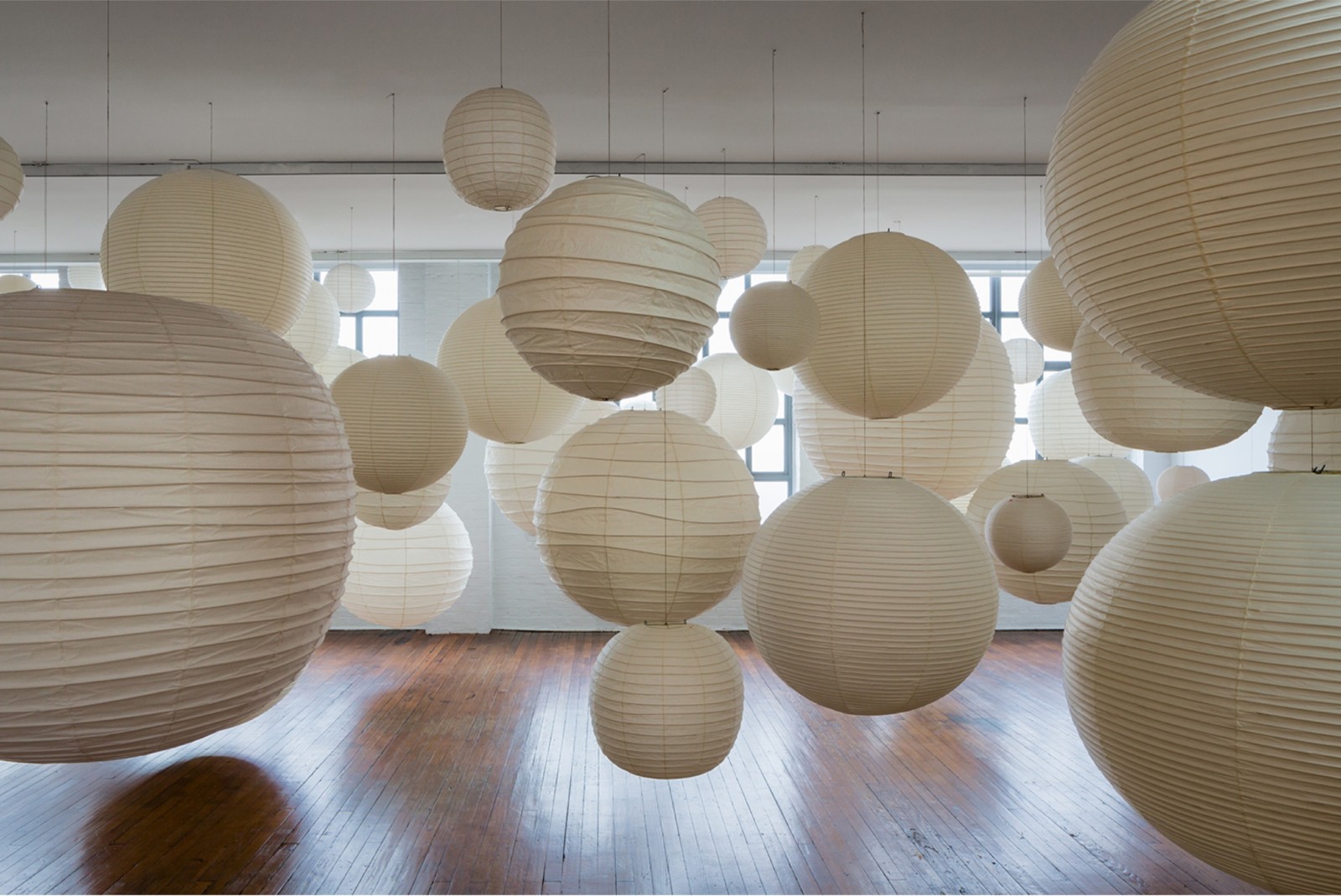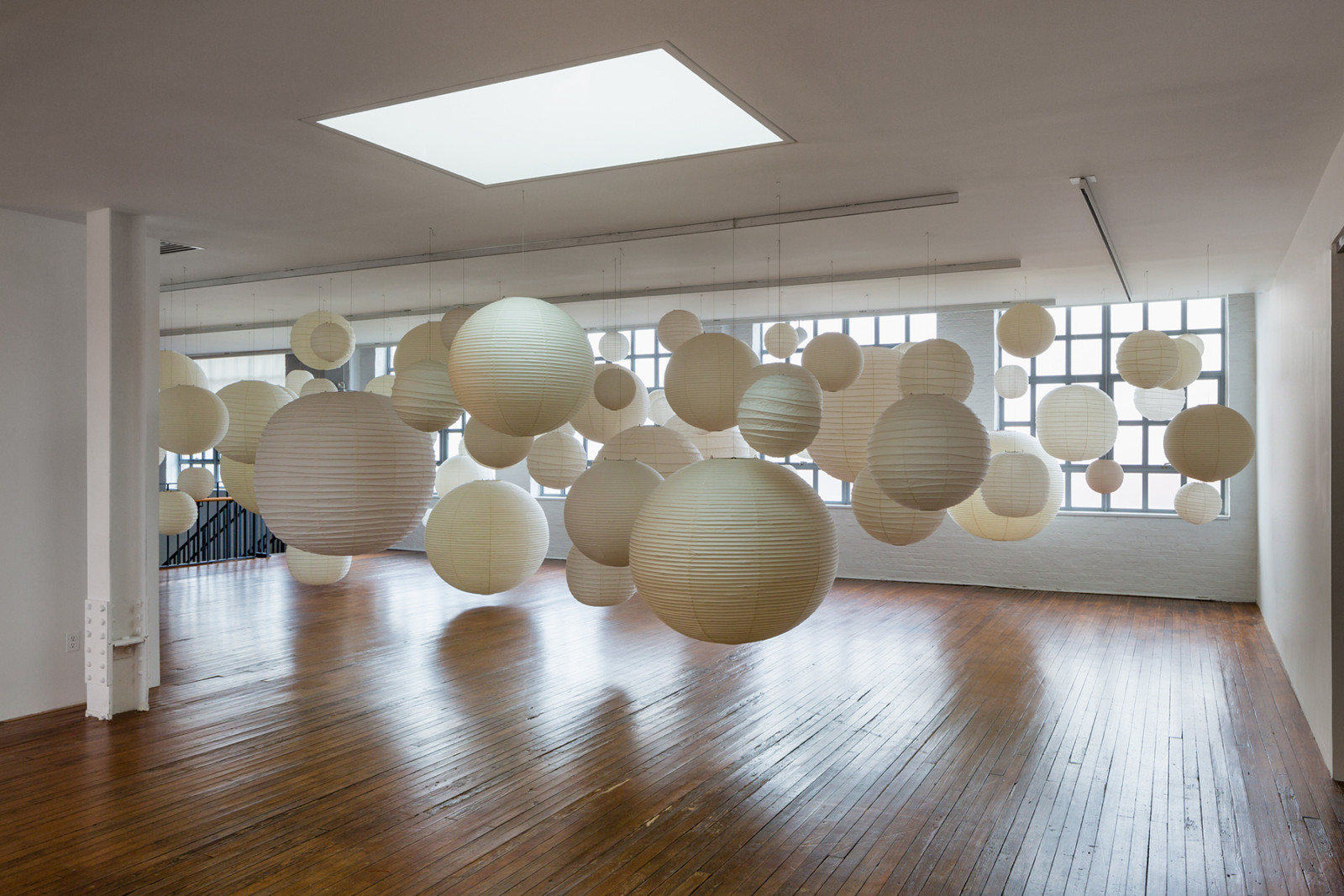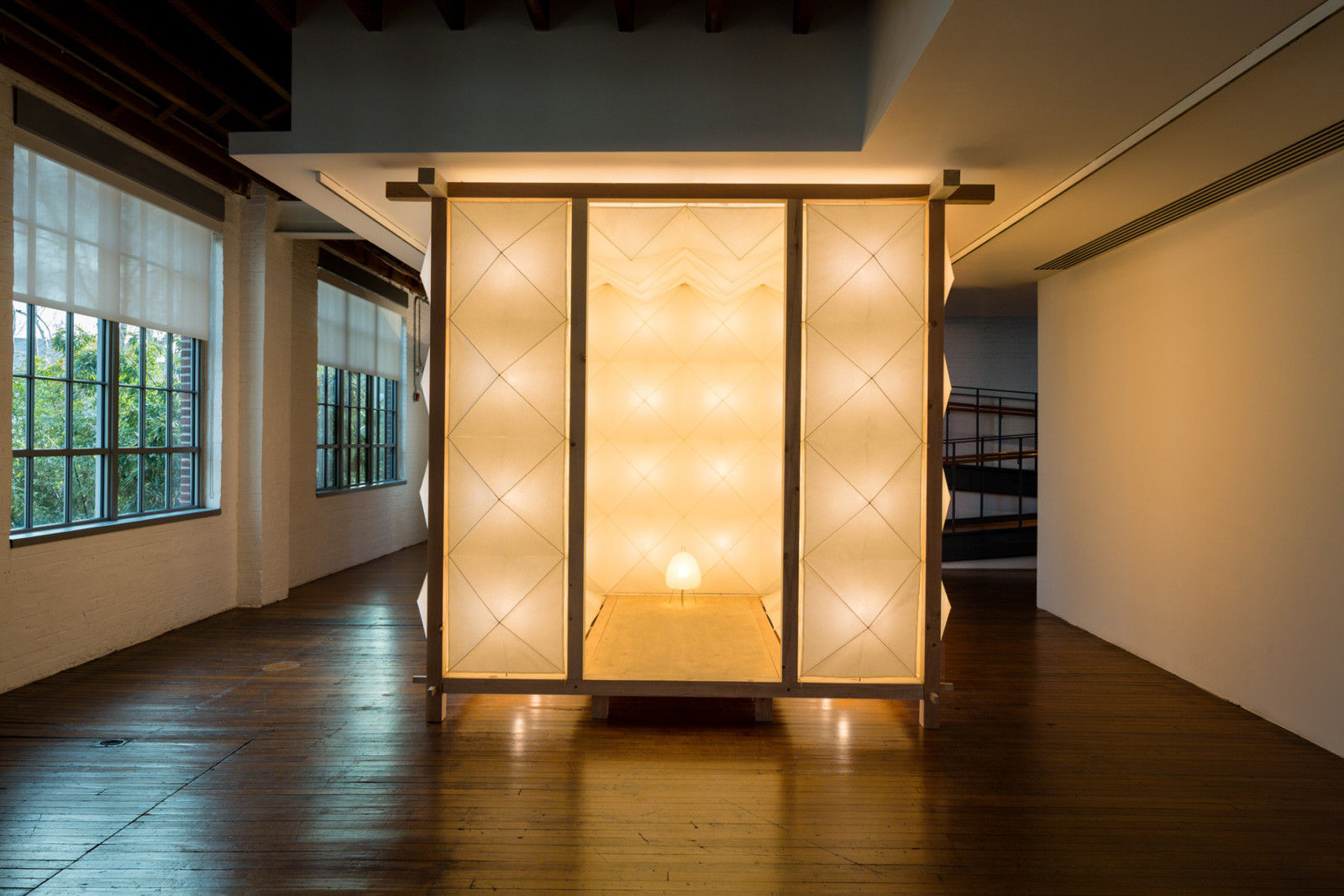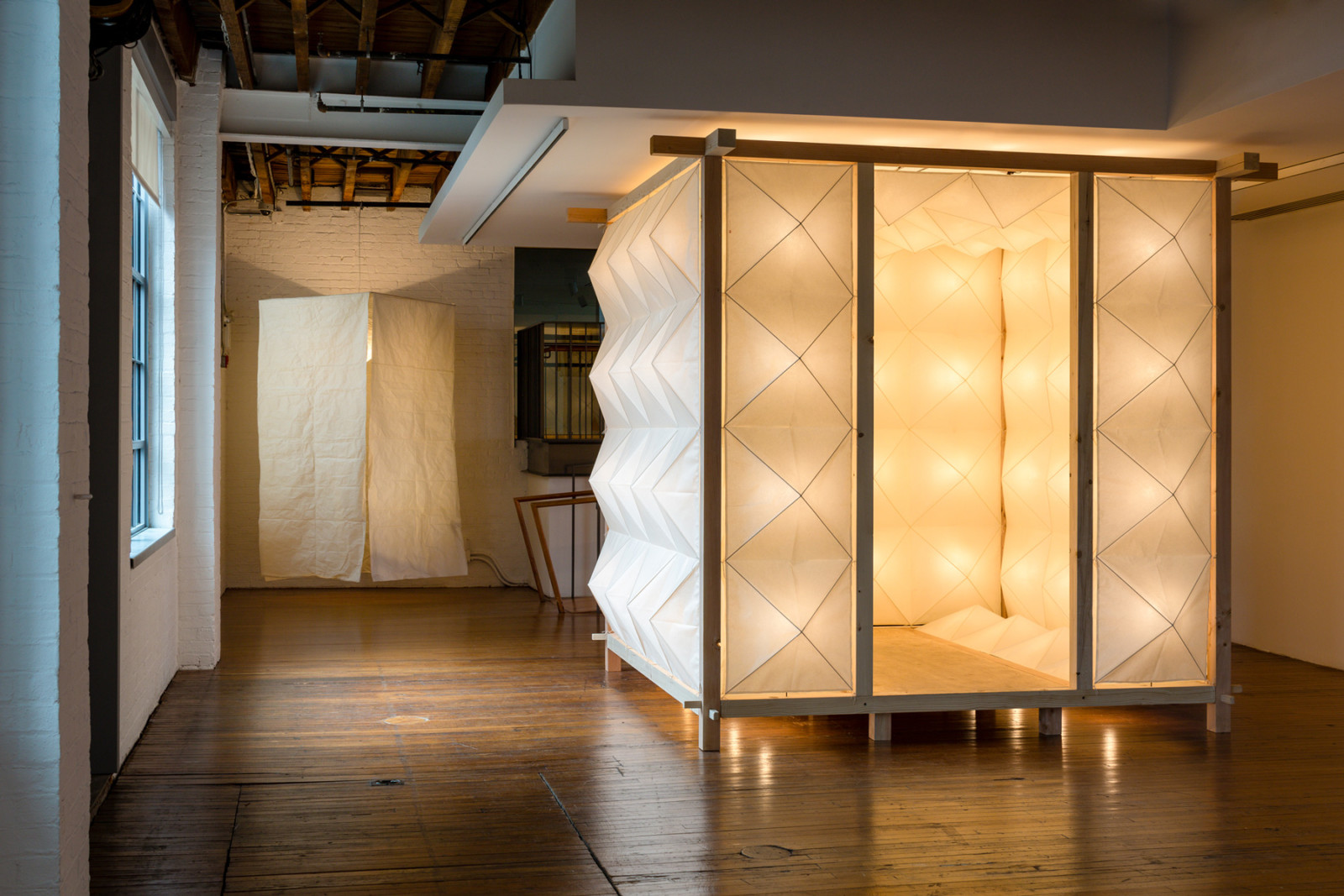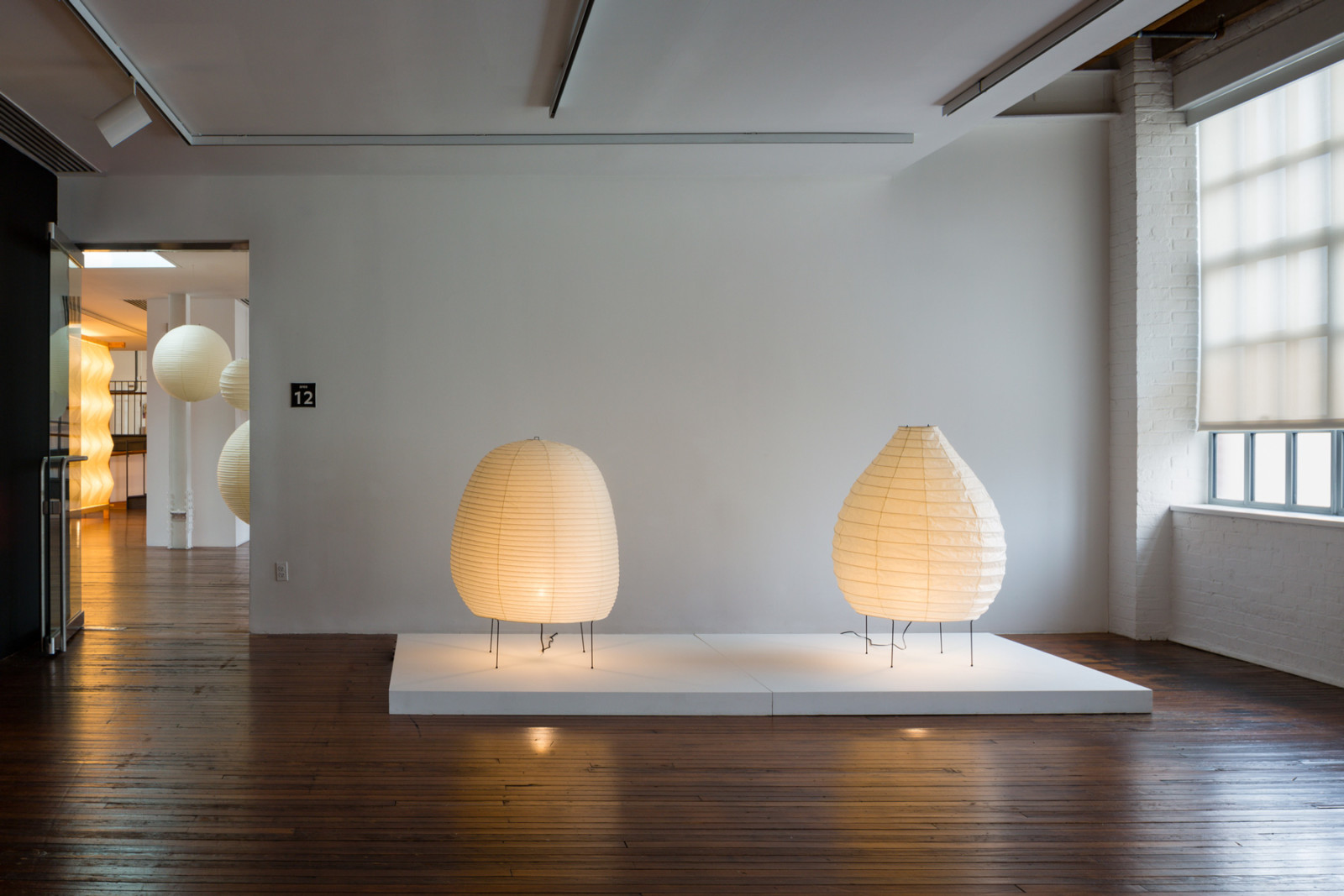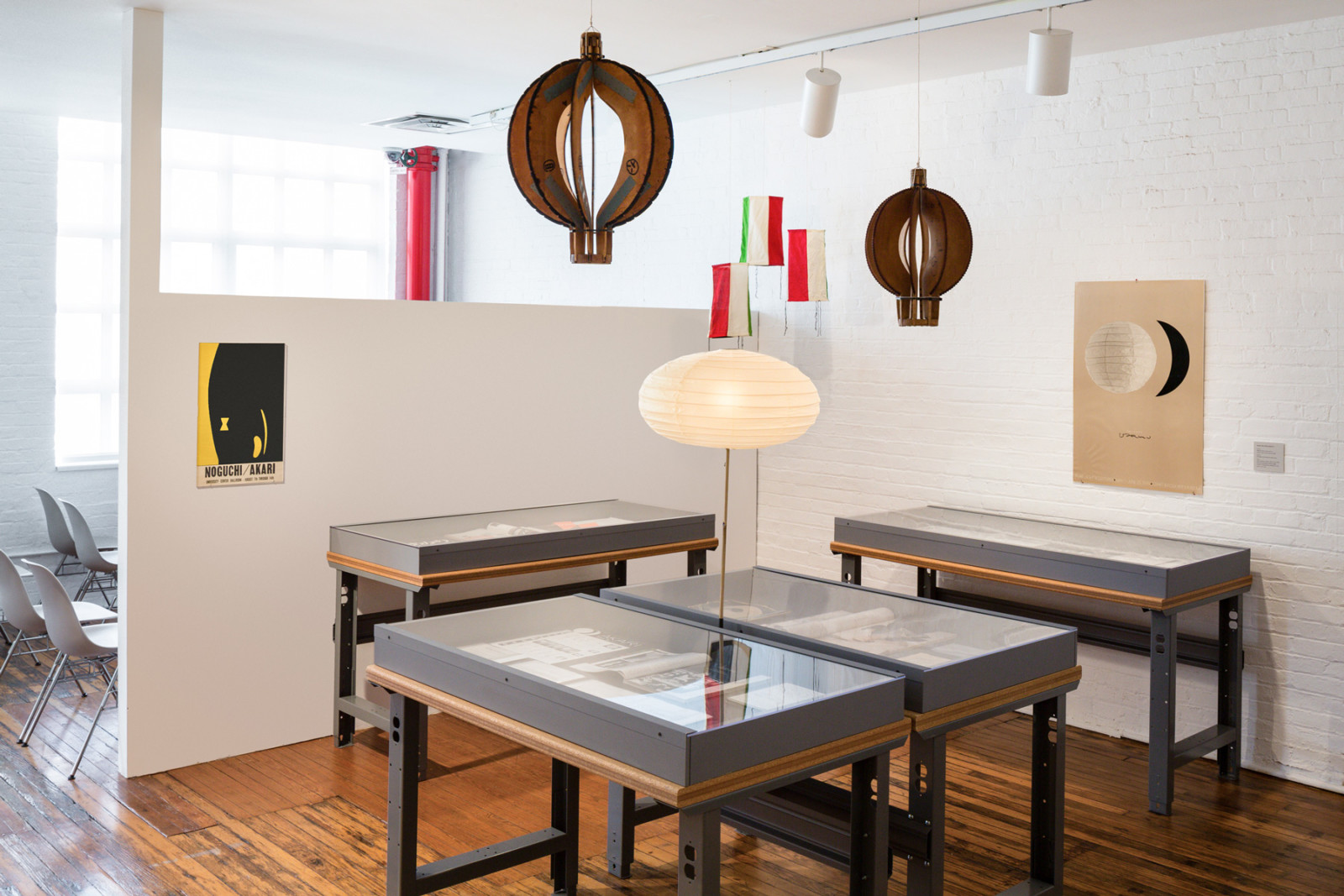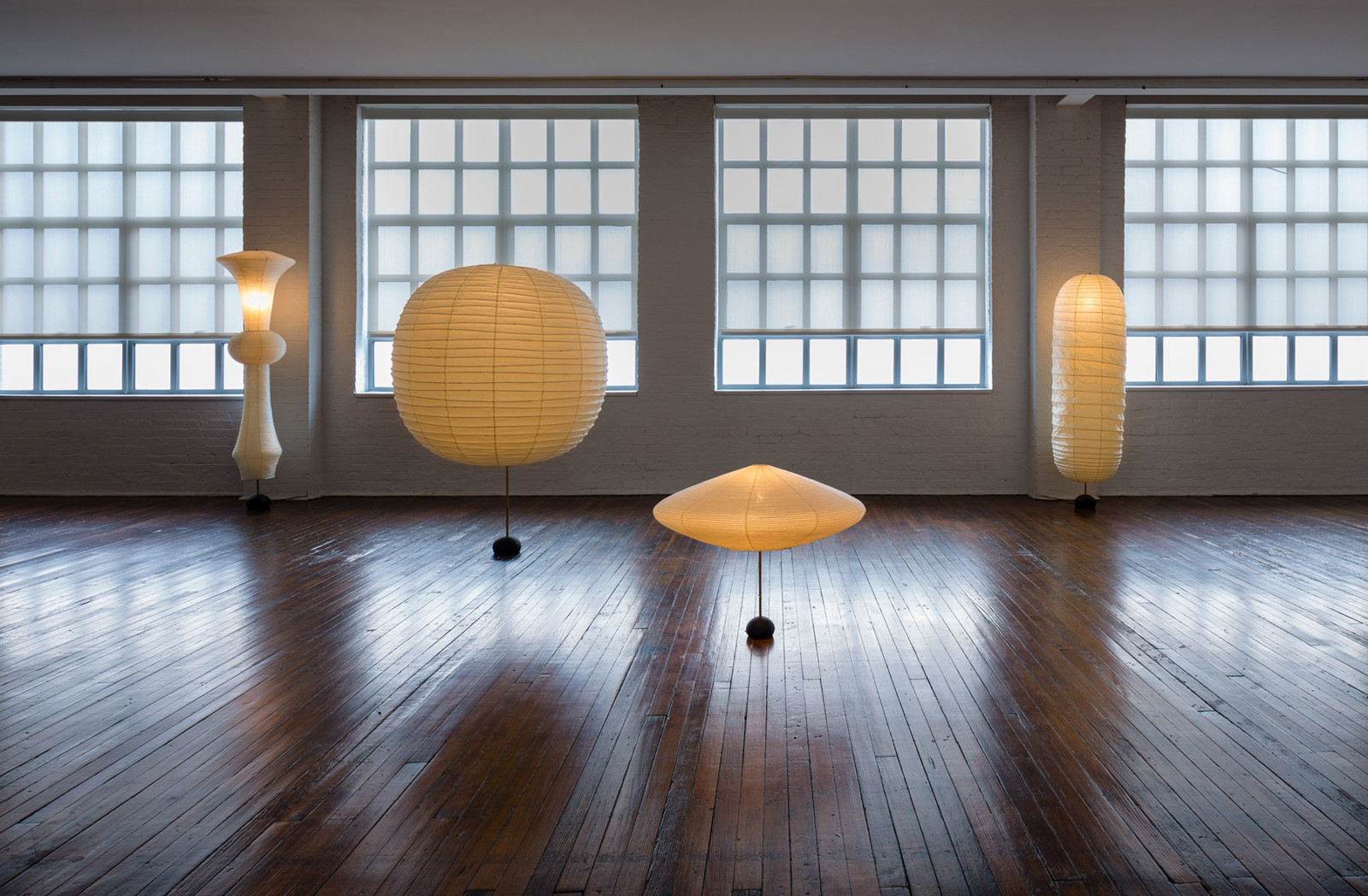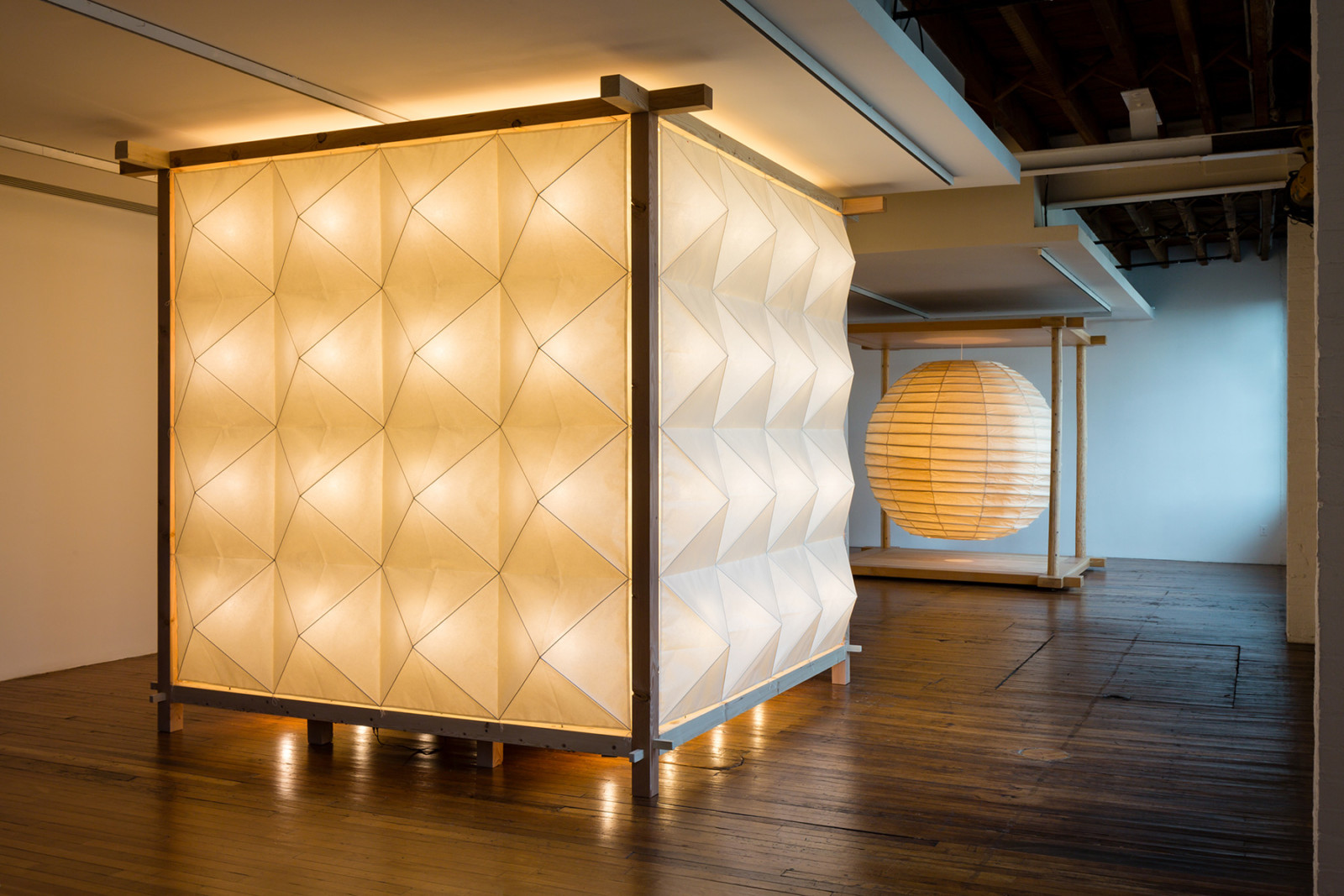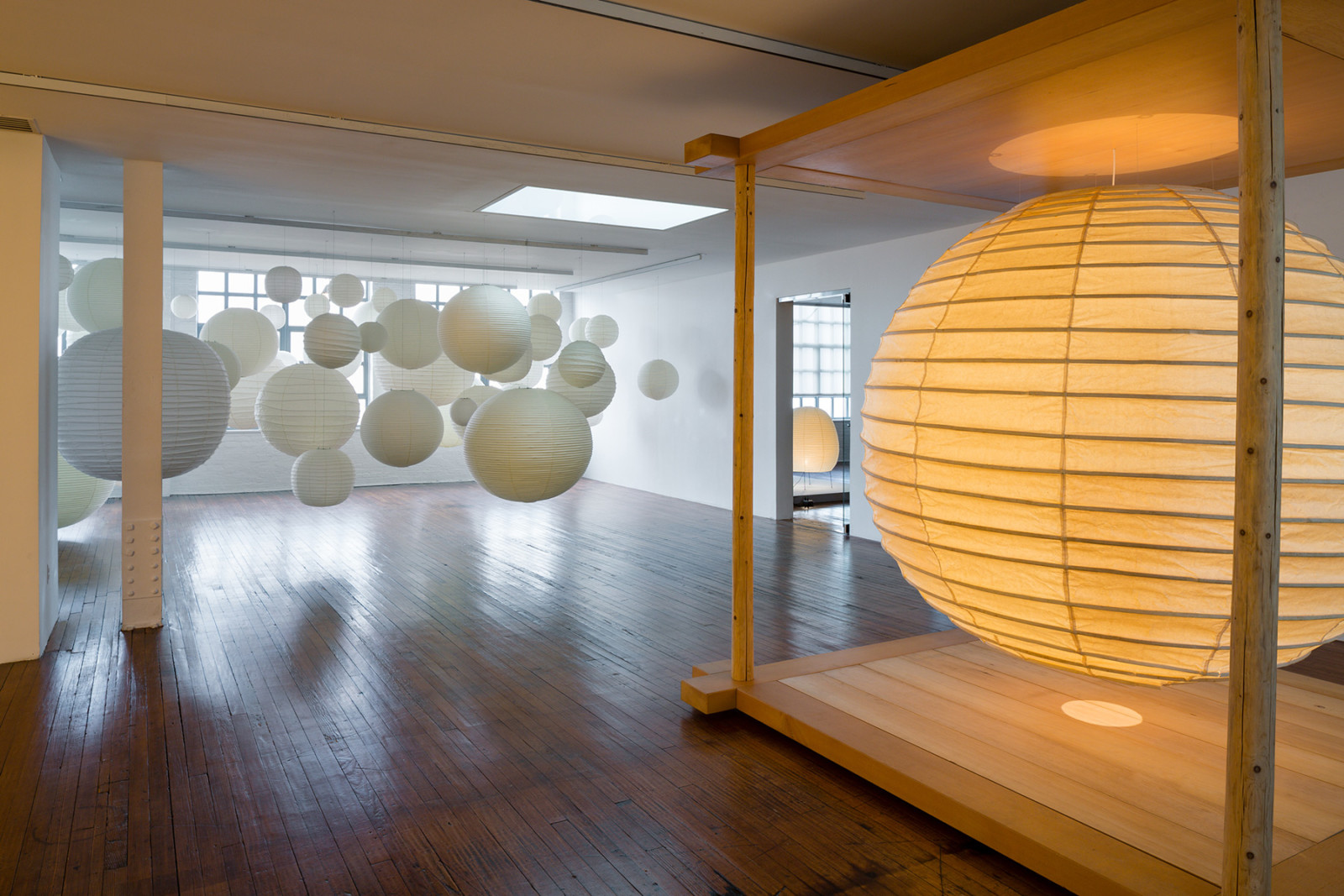Akari: Sculpture by Other Means occupies the Museum’s second-floor galleries. It includes several installations that allow visitors to experience ways that Isamu Noguchi’s Akari—a modular ecosystem of lightweight, collapsible paper lanterns—can create and transform space.
Noguchi’s electrified paper, bamboo, and metal Akari light sculptures have quietly become among the most ubiquitous sculptures on Earth. Their origins lie in 1951 when, on a trip to a still devastated post-war Japan, Noguchi was asked by the mayor of the small town of Gifu City to help revitalize the local lantern industry by creating a modern lamp for export using the traditional washi paper (made by hand from the inner bark of the mulberry tree) and bamboo.
Inspired by the lanterns that illuminated night fishing on the Nagara River, Noguchi worked with local firm Ozeki & Co. to combine the elements of the traditional paper lantern with electricity. He designed a dizzying array of new forms—creating contemporary art by marrying ancient craft with the defining technology of the twentieth-century. He would go on to create more than 200 models of Akari, including an entire line for his exhibition for the American Pavilion at the 1986 Venice Biennale, in the process receiving five American and thirty-one Japanese patents.
